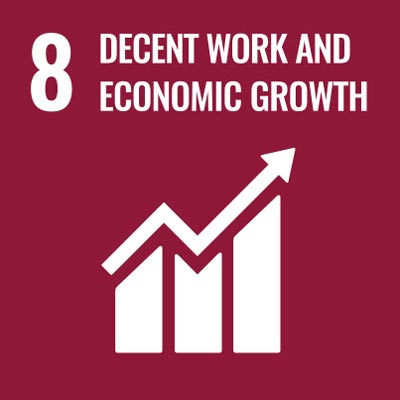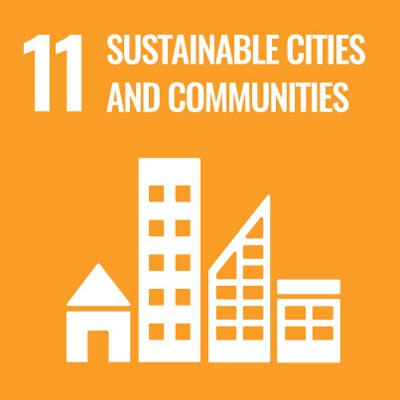European Economic
and Social Committee
Event highlights
The EU's industrial strategy – which indicators to track its progress? The outcome of this debate contributed to the EESC opinion on Updating the new industrial strategy and to the debate on the objectives of the EU's industrial policy. According to the Council conclusions of 16 November 2021, these objectives need to be reflected in sound indicators, in particular concerning industrial competitiveness, industry's contribution to the green and digital transition, and the Union's resilience and strategic autonomy while preserving an open economy.
Welcome
Alain Coheur, President of the Section for the Single Market, Production and Consumption, EESC
- We shouldn't overlook social indicators such as the age, the gender or the skills profile of the workforce in the various ecosystems. These aspects are crucial to anticipate the change ahead but they are also key to building an inclusive recovery, given that young people, women and precarious workers have been the hardest hit by the crisis.
- It is key that we focus on social aspects to ensure good working and production conditions and quality jobs. It is part of our social market economy model, it is in our European DNA and we must be proud of it and continue to defend and support it.
- f we look at indicators by using the foresight approach, we must choose indicators grounded in a long term perspective, which should be inclusive and socially just, ant not leave anybody behind.
Kęstutis Kupšys, president of study group "Updating the new Industrial Strategy for Europe", EESC
- how further extensions of indicator system could be made to reflect the need of the integration of Environmental, Social and Governance (ESG) criteria into policy framework. Especially what concerns the G – governance – element of ESG, which remains a rather underrated one in the triad of these criteria.
- financial market-related indicators, like market capitalization, we must check if they are fit to reflect the competitiveness of European industries in light of the green agenda, or if they just serve as reminders of the ,,greed-based” economy of the last few decades when strong financialization focus prevailed.
Keynote speech
Jarkko Havas, Lead, Insights and Analysis, Ellen MacArthurFoundation (EMF)
- Climate and environmental factors are not isolated issues but must be embedded in all policies: the industrial strategy is a means for achieving the Green Deal. To be competitive in the long term, European companies need to innovate from the environmental point of view. It helps to have a first-mover advantage: the further the EU goes, the bigger the advantage the EU will have on its competitors.
- Circular economy is a systemic shift to producing and using things differently. It is at the heart of the environmental performance of industries, and integral to the Green Deal which aims to decouple resource use and economic growth - another way to define circular economy. Therefore, circular economy is integral to the Industrial Strategy as well. We need upstream solutions and there a place for process indicators in this field. We need to align our efforts to make the EU greener and more circular.
- The Ellen MacArthur Foundation is a charity committed to creating a circular economy, a new economic system in which we design out waste and pollution, keep products and materials in use, and regenerate natural systems. It’s a system that delivers better outcomes for people and the environment.
- The Foundation is also a member of the Coordination Group of the European Circular Economy Stakeholder Forum, a joint initiative of the EESC and the European Commission to accelerate the transition to a circular economy.
Panel discussion: The EU's Industrial strategy – which indicators to track its progress?
Paolo Casini, Economist, Chief Economist Team, DG GROW, European Commission
- All the indicators we developed for the industrial strategy are based on publicly available data. Therefore, no additional reporting obligations for Member States is necessary to calculate them.
- The indicators complement other monitoring tools used by the Commission and don't aim at replacing them. Their main purpose is to report in a synthetic manner and in a single document on the different areas identified as priorities for the European industrial policy.
- We have to be selective in the choice of indicators, and to adapt them continuously. Also, we should not fragment the analysis of the KPIs but take into account all of the other KPIs the Commission publishes regularly.
- The social dimension can become more visible in the KPIs, although several relevant indicators are already part of the framework (e.g. jobs, skills, SMEs).
Isabelle Schömann, Confederal Secretary, ETUC
- There is still a missing element in the industrial strategy and the indicators to track its progress: the social dimension.
- Indicators on the social dimension are key. The Charter of Fundamental Rights of the EU as well as the European Pillars of Social Rights should be the compass for all policies. ETUC is part of the Industrial Forum set up by the European Commission and has made this clear several times.
- To better take into account the social dimension when monitoring progress and implementation of the Industrial Strategy, ETUC proposes to include new Key Performance Indicators:
- Wage levels and development
- Collective bargaining coverage
- Health and safety (e.g. accidents at work and work-related health problems)
- Employment by gender
- Skills, education and training (e.g. participation in learning activities)
- Precarious employment
- Access to labour market for young people, migrants, people with disabilities
- The digital, green and social dimensions are all linked together and it is therefore key to include KPIs that reflect all these dimensions. Besides recovering from COVID-19 , achieving climate neutrality by 2050 and digitalizing our economy, one key objective of the strategy should be to provide sustainable quality jobs to European citizens and to ensure good working conditions for workers in all industrial ecosystems. For that, good KPIs are essential.
- Besides the need for social KPIs, the governance dimension is also very important. EU workers will be key to manage the challenges ahead and that they should be at the core of any new industrial strategy. The Commission should clarify the specific role of social partners and social dialogue and should strengthen workers' participation.
Frank Heemskerk, Secretary General, European Round Table for Industry (ERT)
- Implementing the industrial strategy must be accompanied by quantifiable targets, together with a transparent and concise set of Key Performance Indicators (KPIs). This approach will help bring the strategy to life and keep track and correct course when needed. Only if we monitor, measure, adjust and tackle opportunities, will we truly be able to strengthen the EU’s industrial competitiveness in a sizeable way.
- In November 2020, ERT published a paper "Putting the EU industrial strategy into action", where we propose four sets of indicators: output performance, internal processes, future orientations and global relationships.
- KPIs have a potentially double nature: a political nature and an analytical one. From the political point of view, indicators should be used by politicians to ask themselves "so what?" question, i.e. take political decisions based on what the indicators tell them.
- Europe needs to select a limited number of KPIs that focus on competitiveness. It is key to rank these indicators: rankings create attention. It is also crucial to be extremely transparent on the methodology, so that we cannot be accused of black boxing.
- To track competitiveness we could look at the relative performance in terms of market capitalisation. As for the green transition, we could consider GHG emissions, and for the digital transition, I would recommend focusing on 5G, which is the backbone of the factories of the future, especially for SMEs.
Dirk Bergrath, Co-rapporteur of the EESC opinion on "Updating the new Industrial Strategy for Europe", EESC
- Indicators need to cover horizontal issues and should play a crucial role with respect to the transition in each ecosystem. We need to question if the indicators are going far enough and in the right direction.
- We need reliable and publicly available indicators. We also have to look at how we can implement the industrial strategy on the social and regional level involving regional players.
Lina Konstantinopoulou, Policy Director, EUROCHAMBRES (ECH)
- EUROCHAMBRES appreciates the thorough analysis of the impact of the COVID-19 pandemic based on an assessment of 14 industrial ecosystems. However, we should not treat these ecosystems as isolated entities with different rules or regulations and recommend stronger coordination between ecosystems to achieve industrial symbiosis and Single Market integration. The same should apply to the indicators.
- The ecosystem matrix is important but measuring cross-sectorial performance is fundamental to assess challenges and opportunities in industrial policy.
- Chambers of Commerce and Industry are also best positioned to support the European Commission in gathering input directly from businesses, especially SMEs, to measure ‘real’ progress in industrial strategy. The EUROCHAMBRES Economic Survey, released every year- (next one in November 2021), is one of these fundamental instruments that could support the Commission in gathering more input for better industrial policymaking.
- ECH calls for the Council and the European Parliament to step up their better regulation practices to strengthen the ex-ante and ex-post impact assessment linked to the Annual Single Market Report to provide key reference material and quality appraisals.
Closing remarks
Sandra Parthie, Rapporteur of the EESC opinion on "Updating the new Industrial Strategy for Europe", EESC
- We all want to have evidence-based decision making. Even during the pandemic, the choice of indicators has been key in how the pandemic was managed.
- The debate today showed how difficult it is to choose and rank the key indicators as not all indicators must be at the same level. Indicators do not replace political signals: they can give contradictory messages and we need to decide which messages we should act on.
- In our opinion on Updating the new industrial strategy (ongoing), we highlight that we need to include the social dimension and regularly update the toolbox.
- The KPIs are not only important for the formulation of the industrial strategy but also from the foresight point of view, i.e. define our long-term vision and what we want to achieve.






Downloads
-
Highlights - The EU's Industrial strategy – which indicators to track its progress?